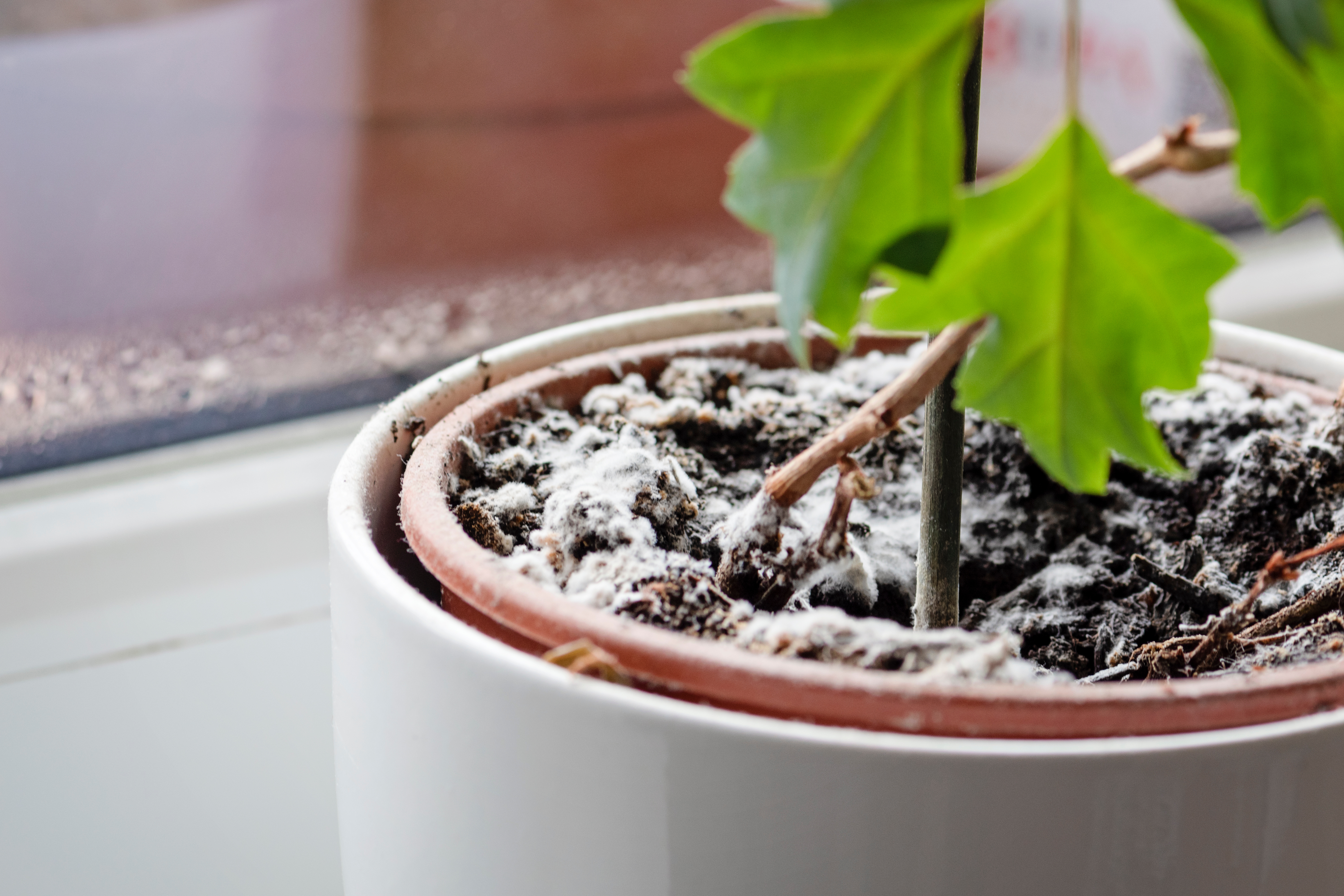Whitish Mold

Want to learn more about Symptoms: White Yellow Mold (Soil Mold)
Get individual care schedule and reminders for your plant with our app Planta. Never kill a plant again!
What is mold?
If you notice a white or yellow, fuzzy coating covering the soil surface or growing out from the drainage holes of your pot, it's most likely soil mold. It can sometimes look a bit like dust or a cluster of tiny eggs, but unlike dust or eggs, it can also have a damp smell to it.
Symptoms
White or yellow, fuzzy coating
Dust or a cluster of tiny eggs
Damp smell

Common causes
Mold likes humid, damp conditions, so if it shows up in your plant's soil then this could be an indication that there’s something going on with drainage or that it’s getting too much water compared to the amount of light. It may also be a sign of poor airflow around your plant - this can prevent the soil from drying out properly in between waterings. It could also be as simple as the soil being fairly new and it having had both fungi mycelium and a high content of organic debris in it from the beginning.
What to think about
The majority of soil molds do not cause any harm to your plants, as they feed on decaying organic material. They break down the organic material, making its raw materials available again for use in the ecosystem. (The majority of plant families interact with different fungi, so it can be beneficial for your plant). This means they won't spread onto your plant - instead, the mold will stay in the soil. However, it can be unsightly, and it may indicate a more serious problem, such as overwatering.
If you notice your plant's soil doesn't seem to be drying out properly in between waterings, it can be a sign that you need to change the soil, use a smaller pot, water less frequently, or invest in a more suitable plant pot (such as one that has more drainage holes).
Try to improve the airflow around your plant - this too can help to eliminate any odors caused by the mold. Don't forget the airflow around the roots. Cachepots that are too snug can cause mold build up around the root system.
Organic debris such as old leaves or organic fertilizers can also grow mold as they slowly break down on top of the soil.